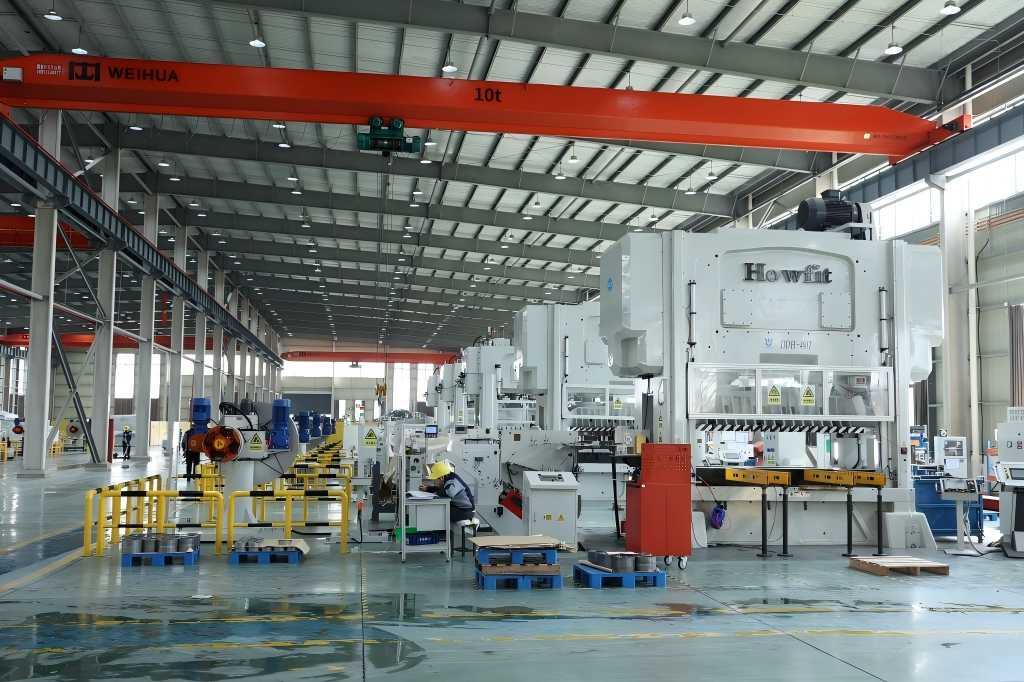Motor lamination manufacturing is a highly specialized field requiring precise techniques to meet the rigorous demands of modern electrical machines. The core of the manufacturing process lies in stamping technology, which is crucial for shaping the laminations that form the stator and rotor cores of motors.
This article explores the technical specifications for stamping technology in the production of motor lamination, emphasizing the crucial elements that affect performance, efficiency, and quality.
1. Precision in Design and Tooling
One of the fundamental requirements in motor lamination stamping is precision in the design and manufacturing of stamping dies. The dimensional uniformity of the laminations is determined by the die’s accuracy. Important elements consist of:
- High-Precision Tolerances: The dies must maintain tolerances within micrometer ranges to ensure minimal variations in the laminations.
- Advanced CAD/CAM Systems: Utilizing computer-aided design and manufacturing tools to create intricate die geometries.
- Material Selection for Dies: High-quality materials such as tungsten steel are essential to withstand the stresses of high-speed stamping while maintaining sharpness and durability.
- Maintenance and Longevity: Regular maintenance of the dies and using durable materials ensure long-lasting performance, reducing downtime and costs.
2. Material Specifications
The motor’s performance and efficiency are directly impacted by the lamination material selection. Typical resources consist of:
- Silicon Steel: Recognized for its superior magnetic qualities and effective electrical insulation properties.
- Cobalt Alloys and Nickel Alloys: For specialized applications requiring higher efficiency and reduced losses.
- Ultra-Thin Laminations: Some applications demand laminations as thin as 0.1mm or even 0.03mm to reduce eddy current losses.
- Consistency in Material Properties: Materials must have uniform thickness, magnetic permeability, and insulation coatings for optimal motor performance.
These materials must be carefully processed to avoid defects such as burrs, scratches, or deformation, ensuring the integrity of the finished motor.
3. Advanced Stamping Techniques
Modern stamping technology has evolved to meet the high standards of motor manufacturing. Key techniques include:
- Progressive Stamping: A series of sequential operations performed in a single die to achieve complex shapes with high efficiency.
- High-Speed Stamping: Machines capable of stamping up to 1,200 strokes per minute, essential for large-scale production while maintaining precision.
- Compound Stamping: Combines multiple operations in a single stroke to improve efficiency and reduce cycle times.
- Precision Blanking: Ensures clean edges and minimal burr formation, crucial for ultra-thin laminations.
4. Surface Quality and Burr Control
Surface quality is critical for reducing losses and improving motor efficiency. Technical requirements include:
- Deburring: Advanced deburring techniques ensure the edges of laminations are smooth and free of imperfections, reducing the risk of short circuits.
- Surface Coating: Anti-corrosion and anti-scratch coatings improve durability and performance, ensuring the longevity of the laminations.
- Quality Inspection: Automated systems for surface defect detection, such as vision inspection technologies, are vital for maintaining high standards.
- Laser-Based Techniques: Laser trimming can further enhance edge precision and surface quality.
5. Dimensional Consistency and Alignment
Consistency in the dimensions and alignment of laminations is essential for motor performance. Key considerations include:
- Flatness and Parallelism: Ensuring that laminations are free from warping or distortion during the stamping process.
- Stacking Factor Optimization: Maximizing the effective magnetic cross-section by maintaining consistent stacking gaps and avoiding misalignments.
- Alignment Precision: Using alignment holes and notches for precise assembly of laminations, which is especially important in high-speed motors.
- Thickness Control: Advanced rolling and stamping techniques ensure uniform thickness across all laminations.
6. Temperature Control and Heat Management
The stamping process generates significant heat due to friction and high-speed operations. Proper heat management is necessary to prevent material deformation or tool wear:
- Cooling Systems: Incorporating cooling mechanisms in stamping machines to dissipate heat effectively and maintain process stability.
- Lubrication: Using specialized stamping oils and coatings to reduce friction and wear on tools and dies.
- Heat Treatment: Post-stamping annealing to relieve stresses, enhance ductility, and improve magnetic properties.
7. Automation and Digitalization
The productivity and dependability of stamping operations are increased by the integration of digital and automated technology. Innovations include:
- Robotic Handling: Automated feeding systems to ensure precise material positioning and reduce human error.
- IoT-Enabled Machines: Real-time monitoring of machine parameters, such as force, speed, and temperature, for predictive maintenance and improved uptime.
- Data analytics: Examining production data to find possible areas for improvement, cut waste, and optimize procedures.
- AI and Machine Learning: Incorporating AI-driven systems to predict tool wear and enhance process optimization.
8. Environmental and Sustainability Considerations
Sustainability is a growing concern in manufacturing, including motor lamination production. Technical requirements addressing this include:
- Material Optimization: Reducing waste through precise material utilization and recycling scrap laminations back into the production cycle.
- Energy-Efficient Processes: Using energy-efficient machines and technologies to minimize environmental impact.
- Eco-Friendly Coatings: Employing non-toxic, recyclable coatings for laminations that meet environmental standards.
- Sustainable Supply Chain: Making certain that raw materials are acquired ethically and adhere to international sustainability standards.
9. Quality Assurance and Testing
Comprehensive quality control ensures the final laminations meet the required standards. Processes include:
- First-Piece Inspection: Verifying the initial output to ensure compliance with specifications and preventing defects in subsequent batches.
- Continuous Monitoring: Using sensors and cameras to monitor the stamping process in real time for any anomalies.
- Magnetic Testing: Ensuring the laminations meet the required magnetic properties for optimal motor efficiency.
- Dimensional Accuracy Checks: Coordinate measuring machines (CMMs) and other sophisticated metrology equipment are used to confirm the accuracy of the laminations.
10. Customization and Adaptability
As motor designs become more sophisticated, stamping processes must accommodate diverse requirements. Among the customization options are:
- Prototype Development: Producing limited quantities for testing and validation prior to full-scale production.
- Multi-Material Stamping: Handling different materials within the same production setup, enabling versatility in manufacturing.
- Design Flexibility: Quick modifications to dies to adapt to changing customer specifications and industry standards.
- Scalable Production: Ensuring the process is flexible enough to handle small prototype runs and large-scale mass production with equal efficiency.
11. Cost Optimization
Balancing quality with cost efficiency is crucial in stamping technology. Strategies include:
- Lean Manufacturing Techniques: simplifying procedures to cut waste and boost output in general.
- Tool Longevity: Investing in high-quality dies and regular maintenance to minimize replacement costs.
- Energy-Efficient Machinery: Reducing operational costs through energy-saving equipment.
- Process Automation: Lowering labor costs and improving consistency with automated systems.
Conclusion
Stamping technology is crucial for modern motor production, requiring precision, innovation, and sustainability to meet global demands for efficient, high-performance, and eco-friendly laminations.



